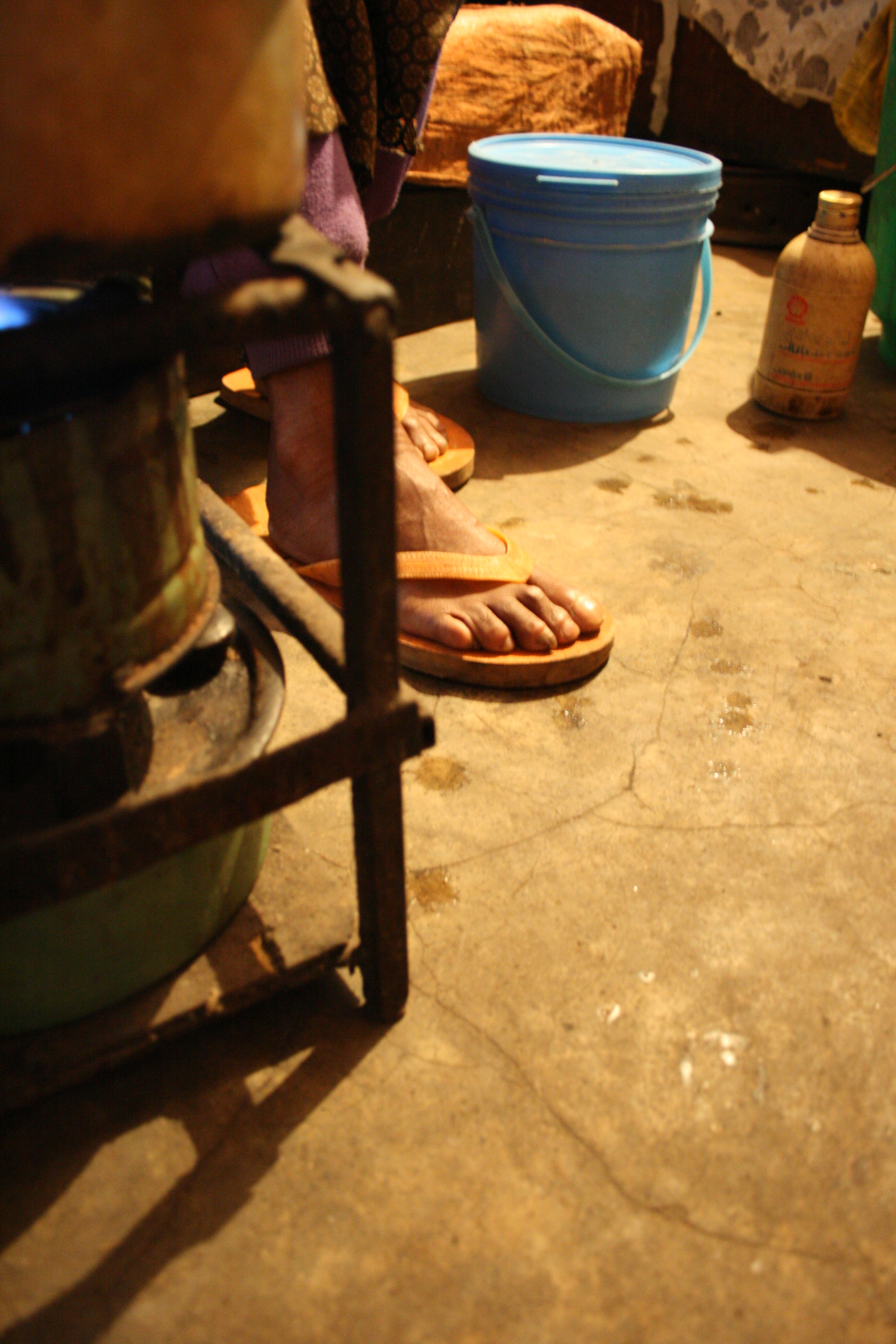Rubbish
by Caroline Knowles
6 April 2014
Originally published in our Old Blog.
The inaccessibility, on security grounds, of the Somaliland section of the flip-flop trail left me in Addis Ababa in the spring of 2012 with more time than I needed to complete the research leading to the end of the trail. This gave me a chance to update the work I’d done five years earlier. I feared a scale of changes that would undermine the book I was to write.
Things had changed but not in the ways I’d imagined. The old lady with the flip-flops — Zema — was living in the same house. Her neighbours, the local kiosk merchant and roadside traders were all still in place. ‘Where is my Arsenal T shirt?’ the welder greeted me. Zema drew me into her house. It looked completely different. Five years ago it was bare; photographs of Wayne Rooney and the Virgin Mary sat atop the sideboard next to a cassette player. Now she had a satellite dish, TV, fridge, upright chairs, and a suite of lounge furniture, all crammed into a tiny living space making it difficult to move around. We got out Zema’s shoes. She still had the brown leather loafers I bought her as a ‘thank you’ for her help with the research. She also had a pair of pink plastic mules with a flower on, a sensible pair of lace-ups with a heel, a pair of plastic sandals for wearing around the house, a second pair of suede loafers and NO FLIP-FLOPS!! She had better shoes! The flip-flop trail had shifted. It no longer ran through Zema’s house. That is, of course, the key point about it — it is unstable, constantly rerouting.



I quickly investigated the situation. How had this improvement in her fortunes been possible? She directed me to her daughter, now working for herself making coffee for sale on the street. She had taken a job in Beirut as a maid for two years and sent back her wages to improve the family circumstances. She had learned Arabic and Lebanese family politics: she had become a (domestic) transnational migrant.
Where were Zema’s old flip-flops? I needed to complete the trail. She told me she had thrown them in a rubbish skip ‘with the house dirties’ on the other side of the main road that ran through her neighbourhood. From there the municipality collected it, she said, and dumped in in Gebrekristos. I set off in taxi to where she had directed me, 11 km from the city centre. Gebrekristos is hard to locate: the taxi driver had to enlist a local to show us where it was. When we eventually get there at the end of a long winding unmade road, there is no sign of the rubbish, but a large number of the residents appear to be disfigured. Asking around a bit I discover from a local priest that I am in a leaper colony: people come here from all over Ethiopia for treatment. I am on the wrong trail, and I wonder about Zema’s elision of discarded objects and people. I am sure that the flip-flops went to the giant city landfill site at Koshe, three kilometres further on. As usual I am lost in translation — Gebrekristos is the old name for the landfill.
My first sight of Koshe is from the highway: a giant, murky, grey-brown raised area of partially decomposed rubbish, with occasional bright specs of colour. As my hopes rise from having found it, by heart sinks as I try to take it in. The interpreter I have engaged for this mission through my contacts at Addis Ababa University is not keen on going ahead. Leaving the taxi and crossing the highway by the bridge, I try to absorb the panoramic view afforded by this elevated viewpoint over the highway. This thirty-six hectare site — shrinking as the city attempts to regulate it — is patrolled from the air by large birds of prey, diving into the rubbish. Motley crews of wild dogs gambolling and snatching at the soft ground patrol it at ground level. Smoke rises in several places, adding a layer of haze to the murky colour scheme. Between the foraging dogs, the smoke, and aerial avian bombardment, some heavy machinery operates. Yellow bulldozers nose the heap and shift and level it; municipal rubbish trucks and flatbed trucks with skips arrive from all over the city and discharge their contents. Between the dogs, the birds and the machines there was something else, something I could only slowly take in. Two or three hundred people, dressed in the same murky hues as the rubbish dump, backs bent, hooks in hand, were working on its surface.
Caroline Knowles is Professor of Sociology at Goldsmiths, University of London, based at CUCR. Her research is about migration and circulations of material objects.
︎ Images by Michael Tan.

